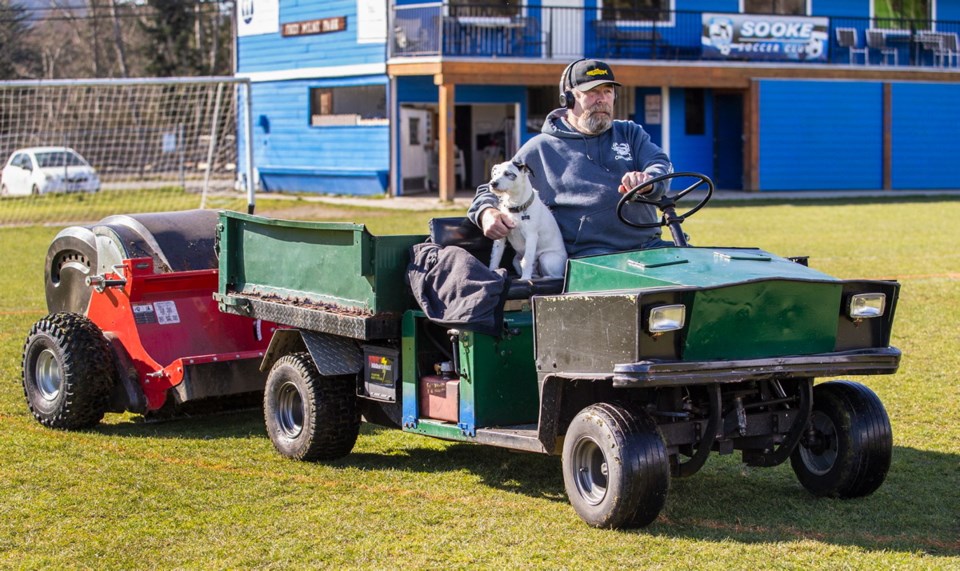As one of the capital region’s more plain-spoken politicians, Mike Hicks has always been good at cutting through the crap. Now, he’s getting rid of it as well.
After years of searching for a way to deal with mounds of goose poop that blight local playing fields, Hicks figures he has finally found the solution — a made-in-New Zealand Tow and Collect machine that sweeps up dung faster than it goes through fowl in the first place.
The director for the Juan de Fuca Electoral Area said he simply wants kids to have a safe, clean place to play. So he used some of his area’s federal gas tax money to buy one of the poop pickers for about $10,000.
“I’m allowed to use it for recreational equipment,” he said of the federal funds. “And so this is a poop Zamboni.”
He intends to let community associations and the Sooke Electoral Area Parks and Recreations Commission use the machine to clear the poop off playing fields and the golf course.
Hicks has been doing the first test runs himself on Sooke’s soccer fields. He pulls the machine behind a little truck while a series of brushes sweep the poop into a hopper, which, once full, can be emptied at the side of the field and the feces hauled away.
Hicks couldn’t be happier with the results.
“It works fantastic,” he said.
The Sooke Soccer Club agrees.
“It’s very effective,” vice-president Robert Oyler said Friday. “It’s like night and day.”
Oyler said the poop problem has been getting worse as the goose population increases.
“It’s become a mess, especially when it rains and that sort of thing,” he said. “When the kids are out there trying to play, it’s just not very nice.”
No surprise then that the club has posted a thank-you to Hicks on its Facebook page, referring to him as their “Poop Hero.”
Hicks admits he was skeptical about the machine at first.
“I was worried how it would work in real wet conditions and with fresh crap, which is pretty soggy; it might not do it. And yet it worked beautifully.
“So I’m totally convinced this is the way to clean up the sports fields throughout Canada. I mean, I think it’s wonderful.”
He’s so impressed, in fact, that he’s trying to get the message out to other municipalities and school districts, so that they, too, can reclaim unused recreation space for children and youth. “These fields must cost a couple of million dollars to build at the end of the day,” he said. “And for the sake of a maintenance person going out — you know once in the morning for an hour — and they’re beautiful fields [again]. So it’s a tremendous investment.”
The Capital Regional District has long struggled to cope with large numbers of non-migratory Canada geese that were introduced to the region in the 1960s and 70s for hunting and wildlife viewing.
Besides fouling playing fields and beaches, geese can damage crops, pose traffic hazards and degrade natural habitats, the district says.
CRD chairman Colin Plant wrote to the federal government just last year, asking for additional resources to help manage the problem. “Recent aerial counts estimate the Canada goose population at between 4,000-6,000, indicating that the goose populations in the region remain relatively high and stable,” he wrote.
All of which means there’s no end of crap in sight and plenty of work for Hicks and his goose-poop machine.



